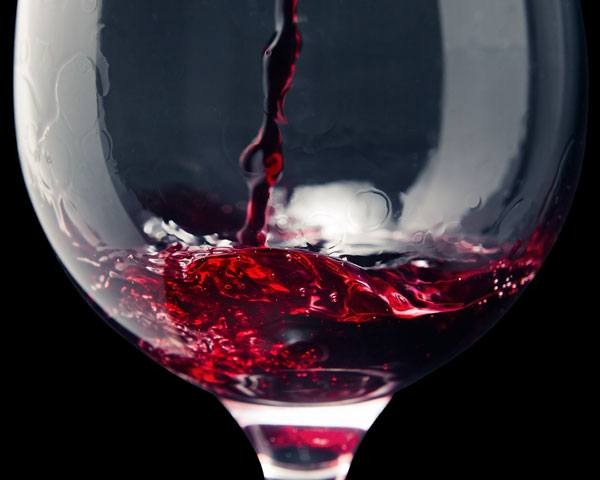Beaujolais Nouveau Arrives Again; Does Anybody Care?
Beaujolais — not the nouveau variety, but the original — is a fresh, attractive, typically grapey red wine made from gamay grapes in France's Beaujolais, in the far southern reaches of Burgundy. At its best — as in the wines of the 10 grand cru Beaujolais villages, Fleurie, Moulin-à-Vent, and the rest, that can put their names on the label (and, incidentally, that can describe themselves as Bourgogne, or Burgundy) — it is a wonderfully winey wine, with real finesse and often surprising complexity.
Beaujolais nouveau is something different, brand-new Beaujolais, without a village designation, usually produced through the process of carbonic maceration, by which grapes are sealed into tanks with carbon dioxide gas and, in effect, allowed to ferment within their skins before they burst under their own weight and release their juice. These are vins de l'année, wines of the year, bottled without a whiff of aging, and meant to be sold immediately and consumed as closely as possible to their moment of creation as possible. "Finesse" is not a term you'd ever apply to them. Grapey, yes. Bright, frivolous, brash, sometimes a little cloying. (I once heard a Parisian wine lover sneer that the example he'd just sipped had "Le goût de bon-bons anglaise" — the taste of English candies; bubblegum is also sometimes evoked.)
In the old days, until the 1950s, Beaujolais nouveau was strictly a local wine in France, drunk mostly in the region itself and not considered serious enough to ship even as far as Paris, much less overseas. But in the 1970s, for whatever reasons (those reasons probably involved what the French so evocatively call le marketing), it became something of a fad.
Back then, the legal on-sale date for Beaujolais nouveau was Nov. 15 (today it is the third Thursday in November — that is, today). The very next day, bistros and cafés all over France would post signs or hang banners in their windows announcing, "Le Beaujolais Nouveau est arrive." Wine lovers would compete with one another to be the first to taste the wine each year. Then the craze spread beyond France, and restaurants and wine merchants in Tokyo, Copenhagen, and New York started vying with one another to be the first to serve the wine. At times, the whole thing got pretty silly. One year, cases of the stuff were flown to Washington, D.C. on the Concorde; on another occasion, a symbolic case was dropped by parachute into London.
Things have calmed down a bit in the past decade, but something like 70 million bottles of Beaujolais nouveau are still shipped around the world every year — with a great deal of it coming to the U.S. This year, the harvest was smaller than usual, which probably means that the wines will be slightly more expensive than they were last year, but advance reports suggest that the quality is better. Tim Johnston, who runs the popular restaurant and wine shop Juveniles in Paris, notes that the wines he's tasted are "fresh and fruity with a bright, tart acidity, a true foil for winter dishes — beef cheeks, oxtail, blanquette de veau.... They're wines with a thirst-quenching, immediate juiciness that incites the next gulp and the next gulp, and the next."
In any case, over the next few days, Beaujolais nouveau aplenty will be flooding into this country, and showing up at your neighborhood wine shop and in many restaurants and wine bars. The easiest example to find will certainly be, as it is every year, that of Georges Duboeuf, a man so identified with the Beaujolais region that he is widely known as "Monsieur Beaujolais." Other labels worth looking for include Trénel, Terres Dorées, Domaine de la Madone, and Louis Jadot. Two pieces of advice, though: First, if you buy Beaujolais nouveau, drink it soon, preferably lightly chilled; it's good Thanksgiving wine, but won't be much good by Christmastime. Second, don't confuse Beaujolais nouveau with the regular variety, and when the nouveau is gone, try a bottle of something good without the nouveau label.
